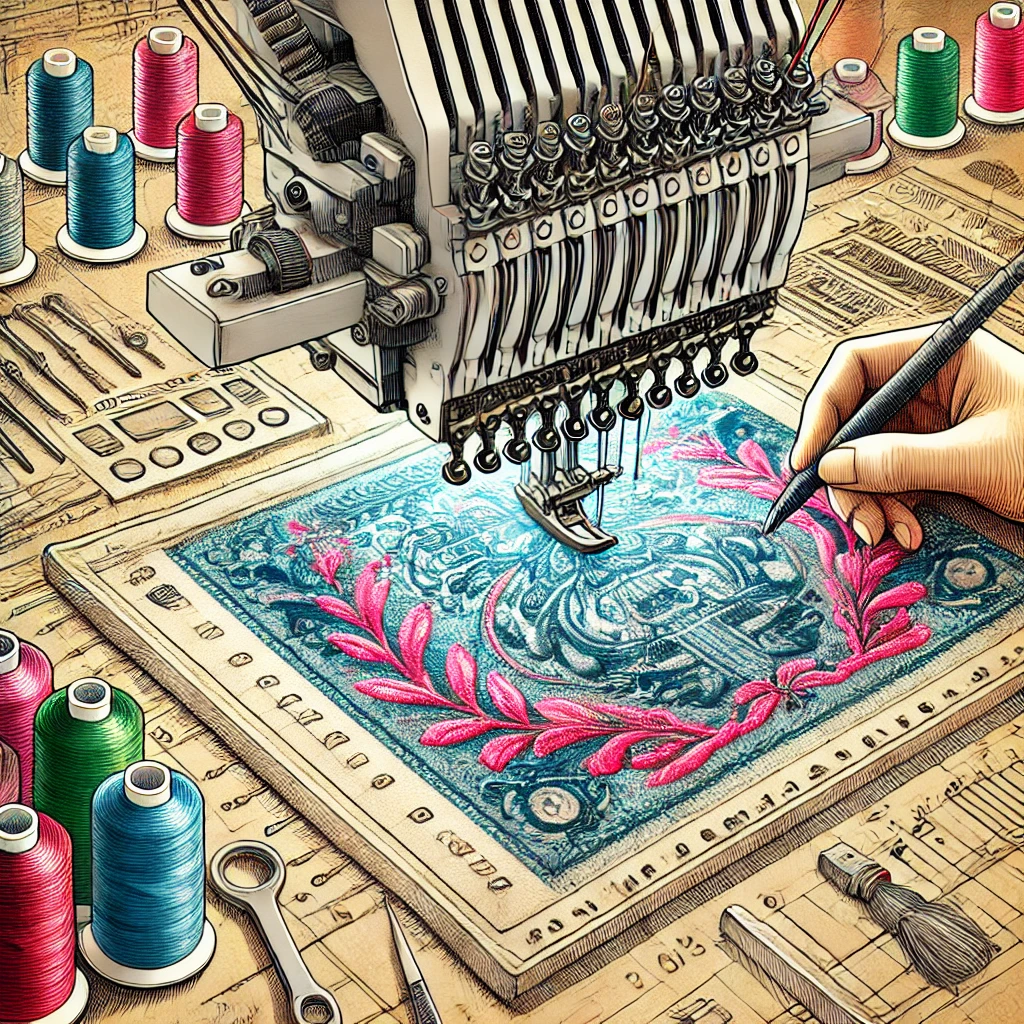Stitching with Care: Exploring the Environmental Impact of Custom Embroidery
1 Introduction to Custom Embroidery & Popularity
1.1 What is Custom Embroidery?
Custom embroidery is all about adding special stitching to different fabrics, creating designs, logos, or other fun motifs. It can be a team logo on a jersey or personal names on clothes. This type of embroidery helps show off a person’s personality and style. It mixes skill with creativity, turning ordinary items into memorable treasures.
1.2 The Rise of Custom Embroidery in Fashion & Business
In recent times, more people are loving custom embroidery. This trend spans different fields—from fashion brands wanting special pieces to businesses needing branded items. With so many mass-produced products around us, custom embroidery stands out as a fantastic option for both personal and professional touches.
1.3 Public Perception & Demand for Personalized Products
Today’s consumers really like personal experiences & products. You can see this in how much people want custom embroidery! They search for items that represent their interests, affiliations, or their own unique characters. Owning something one-of-a-kind creates a meaningful connection for many folks.
- The Materials Used in Custom Embroidery
2.1 Types of Fabrics Commonly Used
Various fabrics work great for custom embroidery—there’s cotton, polyester, denim, and blends too! Each fabric gives different feels & looks which opens so many creative doors. For example, cotton is comfortable and popular while polyester is chosen more for its toughness.
2.2 The Role of Threads & Embellishments
What about the threads used? Well, they greatly impact the final look! Threads come in materials like cotton or polyester; each has its own shine & strength attributes. Plus, adding decorations like beads or sequins can make a design pop but remember—they might affect the environment depending on where they come from.
2.3 Environmental Impacts of Material Sourcing
Sourcing materials for custom embroidery can have varying effects on the environment. For example, traditional cotton farming uses a lot of water and relies heavily on pesticides, which can harm ecosystems. On the flip side, choosing organic cotton or recycled polyester can be a smarter, more eco-friendly option, and helping to reduce environmental impact
Energy Consumption in the Embroidery Process
3.1 Overview of the Embroidery Production Process
The process of making embroidered items has several steps—starting from design creation to stitching on fabric! Each step needs energy—either from manual work or machines that use electricity—so we need to look at how this affects our planet.
3.2 Energy Usage: Manual vs. Machine Embroidery
Manual embroidery saves energy since it doesn’t need electricity, but it takes longer and isn’t always practical for larger orders. Machine embroidery is quick and works well for bulk items but uses a lot more energy than manual methods do!
3.3 Practical Ways to Reduce Energy Consumption
To cut down on energy use, embroidery companies can use energy-efficient machines, tweak production schedules and train workers in smarter techniques too! Also, using solar panels or other renewable resources can really help reduce overall energy needs.
- Waste & Byproducts Generated from Custom Embroidery
4.1 Fabric & Thread Waste: Statistics & Concerns
During the custom embroidery process, quite a bit of waste happens—especially leftover fabric scraps & thread! It’s estimated that textile waste adds up to around 92 million tons each year! Tackling this problem is super important if we want to lessen our environmental impact.
4.2 Chemical Byproducts from Dyeing & Treatment Processes
Dyeing and finishing fabric often involves strong chemicals that can pollute if not handled properly. This pollution doesn’t just hurt nature—it poses health risks too for workers involved. So understanding these chemical processes better helps create an eco-friendly approach to embroidery!
4.3 Recycling & Up cycling Initiatives in the Industry
Luckily, there are some recycling efforts underway to tackle waste within custom embroidery! Many brands aim to reuse fabric scraps while also using recycled materials for new products too! These initiatives not only minimize waste but also foster creativity along with sustainability!
- Positive Environmental Practices in Custom Embroidery
5.1 Sustainable Material Choices
Making smart choices about materials is one easy way for embroiderers to lessen their environmental footprint! When businesses choose organic, recycled or renewable options—it benefits both our planet and attracts eco-conscious shoppers!
5.2 Eco-friendly Production Techniques
Using green techniques like water-saving dye processes makes a huge difference too! Many companies invest in technology designed to save both water and energy during production—so they’re doing their part!
5.3 Certifications & Standards for Sustainable Practices
There are several certifications available that guide businesses toward sustainable actions—like Global Organic Textile Standard (GOTS) or OEKO-TEX certification! These help businesses show they care about sustainability while earning customer trust and loyalty!
Conclusion
Understanding how custom embroidery impacts the environment plays a key role as we move toward becoming conscious consumers! By focusing on sustainable materials, energy-saving practices and smart waste management—we can still enjoy beautiful personalized designs while being kind to our planet! The future of custom embroidery truly lies in our hands together; let’s stitch together a more sustainable story!
FAQs
What are the most sustainable materials for custom embroidery?
Some best options include organic cotton, hemp, and recycled polyester—these are eco-friendly choices with less negative effects on the environment!
How can businesses & individuals reduce waste in custom embroidery?
Both groups can reduce waste by reusing fabric scraps when they can and choosing more sustainable materials and opting for projects that need less thread/fabric overall.
Are there eco-friendly companies specializing in custom embroidery?
Yes indeed; quite a few companies focus on green practices! Searching for brands promoting sustainable methods will help make informed choices!

